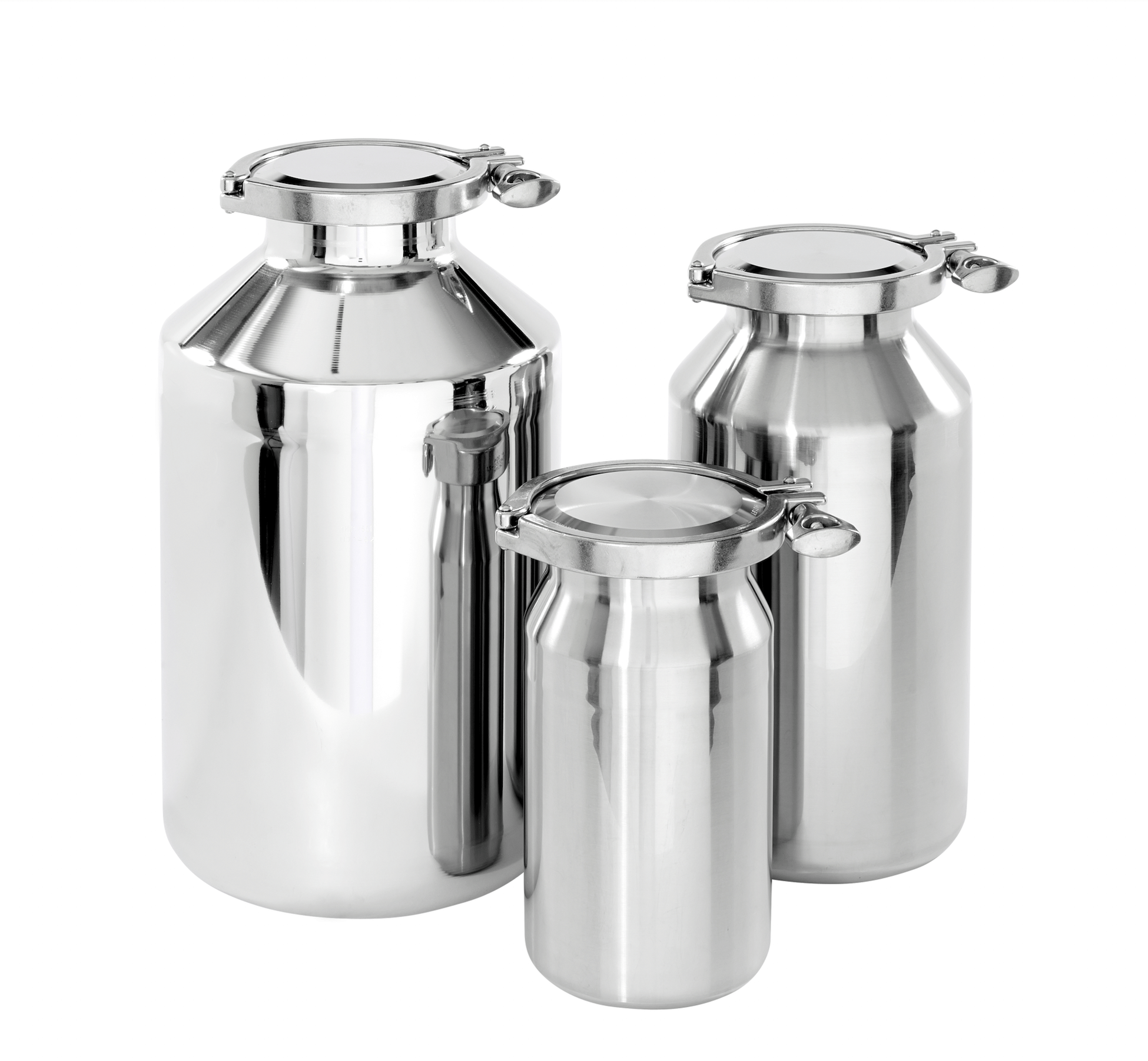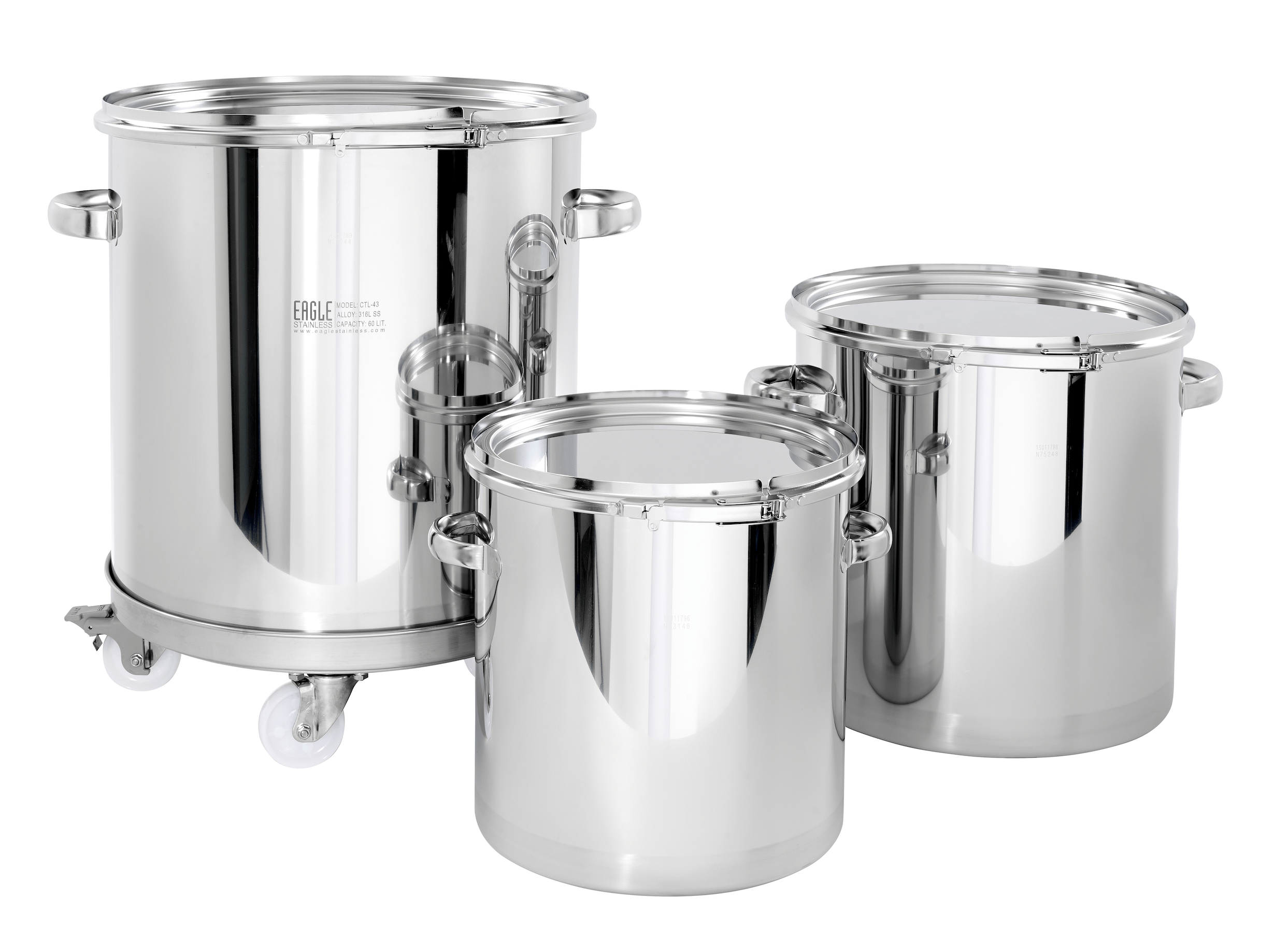Stainless steel is used for everything from industrial stainless steel processing machinery to the pots and pans in residential kitchens. Processing vats and machinery, storage and distribution containers, commercial and residential appliances, cooking knives and eating utensils – stainless steel is at the heart of food processing, storage, and consumption.

Why choose stainless steel for the food and beverage Industry?
Several qualities of stainless steel make it a natural choice for the food and beverage industry.
Stainless steel
- offers exceptional corrosion resistance, temperature resistance, and a smooth surface. These qualities make it easy to sanitize with chemicals or heat and durable when exposed to salts, some acids, and alcohols – ingredients common in food and beverages.
- has low reactivity. Not only does it resist corrosion when exposed to food and beverages, it doesn’t react with or contaminate them, keeping the products pure and safe.
- is strong and durable, making it a long-lasting, cost-effective material.
- has great formability and can be formed into a myriad of equipment and containers.

FDA regulations and the Food Safety Modernization Act
In 2011, the FDA shifted its approach to food safety from reactive to preventative with the Food Safety Modernization Act (FSMA). Instead of focusing on solving problems of existing food- borne illnesses, the FDA now seeks to prevent them through standardized preventative practices. The FDA also regularly updates its code, ensuring that the rules stay applicable to modern processes.
These FDA rules govern the types of surfaces that can come in contact with food, for utensils, equipment, and containers. Surfaces cannot “impart colors, odors, or tastes to the food.” They must be smooth and easy to clean, resistant to corrosion, pitting, and other forms of deterioration, sturdy enough to withstand repeated washing, and non-absorbent. Since the FDA’s list of requirements for food-contact surfaces closely mirrors several of the benefits of food quality stainless steel, it makes sense that stainless steel is used so predominantly in the food and beverage industries.
The FDA also requires traceability for food and beverage products since the agency must be able to follow up if a foodborne infection occurs. Food must be tracked throughout the production and delivery cycle. Plus, regularly scheduled cleaning and maintenance of storage containers and equipment must be completed to meet preventative guidelines. Stainless steel can be engraved through laser etching, which can make it easier to track and document the path that food or beverages take during processing, storage and delivery and to ensure and document proper cleaning and maintenance compliance.
Food quality stainless steel
Is stainless steel food safe for all food and beverage industry applications? That depends on the type of stainless steel. It comes in many variations created through differences in alloy mixtures. These variations are grouped by series and then classified more specifically by grades. While all stainless steel has a certain amount of strength, durability, and corrosion resistance, some types of steel are more durable or more resistant than others.
For food quality stainless steel, the most common series used is the 300 series. This series contains both chromium and nickel and offers an especially high level of resistance to common food and beverage ingredients. Grades 304 is specifically resistant to most acids, making it an excellent choice for acidic foods. However, 316, which also contains molybdenum, is preferred for some applications due to its exceptional resistance to chlorides, including salts. The 300 series steels are also non-magnetic, which can be an important consideration in some environments.
Stainless steel’s finishing makes a difference too. Metal finishing for food service applications must be super smooth to prevent any foothold for bacterial growth. A super smooth surface resists biofilm growth and is easier to sanitize. Passivation and electropolishing of stainless steel can increase its smoothness and corrosion resistance. For hygienic stainless steel fabrication, the fittings, and welds must be sanitary as well. They must connect or seal perfectly without allowing an opening or crevice for bacteria or other microbial growth. And they must also be made of materials that are food safe.
Stainless steel is the future of safe and sustainable storage
Stainless steel offers both a safe and sustainable alternative for storing, transporting, and packaging food. As public concerns about sustainability and about the long-term health impact of food additives and contaminants increase, stainless steel becomes even more important. Due to its low reactivity, stainless steel offers customers reassurance about the impact of storage material on what they are consuming. And since stainless steel is both durable enough to be used for years and recyclable, it’s an environmentally responsible choice. Stainless steel can potentially be part of an industry’s community social responsibility strategy.
It’s also a material that is accessible to both producers and consumers at every stage of food processing and consumption due to its formability. Stainless steel drums can be used in industrial food production to hold commercial quantities of ingredients, such as oils, or to transport large quantities of food ingredients or beverages. In restaurants, stainless steel containers are perfect for bulk storage of food items that are used frequently. At home, stainless steel food packaging for leftovers, canisters, and beverages are all becoming increasingly popular and more readily available in retail markets.
Choosing your stainless steel supplier for your food and beverage industrial and commercial needs:
Some things to consider when choosing your stainless steel fabricator:
- Do they offer food safe stainless steel grades?
- Are their welds and fittings smooth, secure, and made of food safe materials?
- Will they provide passivation and electropolishing to make the surface even more durable and corrosion resistant?
- Do they offer clamps in-house that seal tightly enough to block out bacteria and other contaminants?
- Can they customize the fabrication to meet your exact needs?
For a company that checks yes to all these important questions and delivers both top grade steel,quality and service, contact Eagle Stainless.
